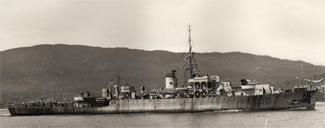
|
|
SUBSIM: The Web's #1 resource for all submarine & naval simulations since 1997
 |
SUBSIM: The Web's #1 resource for all submarine & naval simulations since 1997 |
|
|
 06-12-08, 11:24 AM
06-12-08, 11:24 AM
|
#1 |
|
Frogman
 Join Date: Jan 2007
Location: UK
Posts: 307
Downloads: 0
Uploads: 0
|
That's fair enough Jim, but what I thought was interesting was that he said he was being hit 30m under the water (okay the conning tower is higher) so I wasn't sure whether that was historically possible. I'm still not sure
|

|

|
 06-12-08, 11:56 AM
06-12-08, 11:56 AM
|
#2 |
|
Dipped Squirrel Operative
|
Hi,
an attacking plane could certainly have an impact to flooding cells, pressure bottles, pipes and certainly the outer Diesel saddle tanks, however i doubt an MG shell would have even put a dent into the pressure hull Greetings, Catfish |

|

|
 06-12-08, 12:03 PM
06-12-08, 12:03 PM
|
#3 |
|
Commodore
 Join Date: Feb 2005
Posts: 622
Downloads: 0
Uploads: 0
|
High velocity rounds tend to disintegrate on hitting water and rarely penetrate more then a couple or few feet. Even 20mm cannon rounds won't penetrate very far.
At a keel depth of of 30m, the upper deck of even a even a type IX is what, 15-20m below water, so no way an aircraft machine gun or cannon round would penetrate that much water. Pieces of rounds may float down and tink against the hull, but in the real world, no .303 or.50 or 20mm round would have caused any damage.
__________________
My Father's ship, HMCS Waskesiu (K330), sank U257 on 02/24/1944  running SHIII-1.4 with GWX2.1 and SHIV-1.5 with TMO/RSRDC/PE3.3 under MS Vista Home Premium 32-bit SP1 ACER AMD Athlon 64x2 4800+, 4GB DDR2 RAM, 400GB SATA HD Antec TruePower Trio 650watt PSU BFG GeForce 8800GT/OC 512MB VRAM, Samsung 216BW widescreen (1680x1050) LCD |

|

|
 06-13-08, 02:49 AM
06-13-08, 02:49 AM
|
#4 | |
|
Frogman
 Join Date: Jan 2007
Location: UK
Posts: 307
Downloads: 0
Uploads: 0
|
Quote:

|
|

|

|
 |
| Thread Tools | |
| Display Modes | |
|
|
